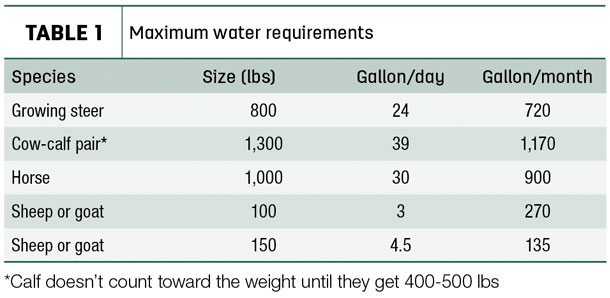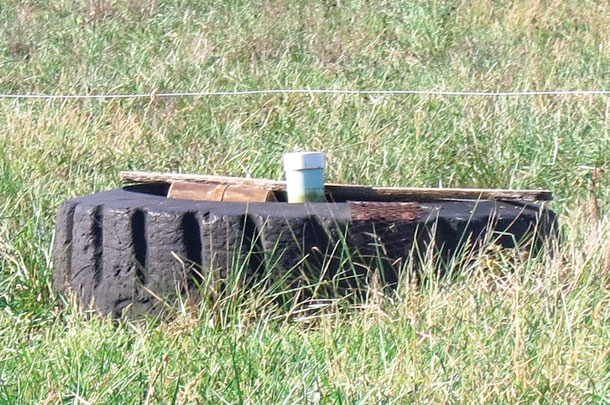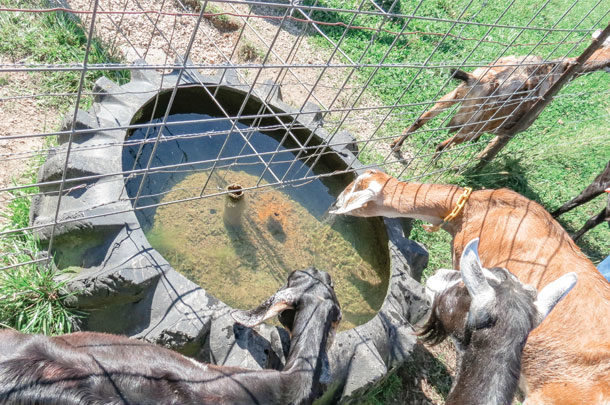Think about it: In the heat of the summer, how much water do you drink from a water bottle on the dashboard of the truck versus one that came out of a cooler? Also, think about the temperature of the water under the ice you are breaking in the winter time. My guess is that water under the ice is below 40˚F, and typically in the winter, cattle are eating hay with very little water in it. Just think about trying to eat a bunch of crackers without any water.
University of Missouri studies show that water location can impact forage use efficiency and manure distribution when grazing. Providing water in pasture areas increases water consumption by 15 percent. Forage utilization and manure distribution improve significantly if cattle travel less than 800 feet to go to water. If cattle travel more than 800 feet to get to water, the area near the water is overgrazed and the area away from the water is undergrazed.
In my role as a grazing specialist, access to water or distribution of water is one of the significant barriers to improving grazing management. Improving your livestock watering system is not a problem; it is just a matter of asking questions and making decisions. Some of those questions will be discussed below.
What is the source(s) of water?
Ponds, streams and springs: Can you limit access to the location, so the livestock don’t stand in them? Can water be gravity fed or pumped away from the location to better distribute water across the grazing system? If moving water away from a pond or stream, make sure you are collecting or pulling water from the center of the water profile, if possible.
Is the water quality of these sources as good as well or rural water would be? What is the temperature of water on top of a pond or stream when it is 90-plus degrees outside? Is there an adequate amount of water in the heat of the summer?
Well: Is there an adequate reservoir of water, especially in summer months? Is the water quality OK?
Rural water: What is the cost to hook up to it? What is the monthly cost of water usage? Is the pressure in the rural water main adequate to get the water distributed across the grazing system? Water quality and quantity typically are not an issue with rural water. I’ve had some producers tell me the cost of rural water can be justified because of improved conception rates and weight gain when they fenced their livestock out of the ponds and streams.
What type of livestock and how many?
Livestock type, size and number affect how much water is needed, how big of a pipeline is required and the type and size of watering facility required.
Indiana NRCS designs watering system volumes based on a maximum of 30 gallons per 1,000 pounds of animal per day (Table 1).

Lactating animals require more water per day per pound than non-lactating animals. Moisture in the forage, air temperature and humidity dramatically affect how much water an animal requires.
If livestock must walk a long distance (greater than 600 to 1,000 feet) to water or cannot see the water location from where they are grazing, they will travel in a group to water. If water is close, livestock will go to water in small groups of two to five; therefore, the waterer can be a lot smaller and hold less water than if they go as a big group.
If livestock will go as a large group, Indiana NRCS recommends waterers should have a minimum of 15 inches per one-third of the entire herd (for 30 cows, this is 12.5 feet of water access; for a round tank, this would require a 4-foot-diameter tank). In the heat of the summer, if using an automatic waterer, it is a good idea to provide additional watering space in a portable tank near the automatic waterer.
The waterer or the pipeline supplying the waterer needs to be able to hold enough water so all the livestock get an adequate drink before the group moves back out to the pasture. Cows can drink as much as 8 gallons at a time, three to five times per day. Therefore, 30 cows can drink 240 gallons in 15 to 20 minutes. A pressurized system needs to be able to deliver the amount of water needed in a short period of time, especially if using waterers that only hold 20 to 40 gallons. A slow recharge system such as a spring or solar water pump might need a large water reservoir.
Where to locate water

Waterers should be as centrally located as possible to decrease walking distances and improve grazing efficiency. If possible, a single water location can serve multiple pasture areas. However, be aware of dividing a waterer with a fence. There needs to be enough space on each side of the fence for the number of animals. Locating water away from shade and mineral encourages livestock to walk to multiple locations within a pasture area; although open tanks out in the sun tend to have more algae growth than waters with lids or waterers in the shade.
Be sure to place geotextile and gravel around permanent water locations so they don’t turn into mud holes. These should have geotextile fabric for the base, then 6 inches of stone, and can be topped with 2 inches of coarse ag lime. The gravel area should extend a minimum of 8 feet from the edge of the waterer.
Contact your local NRCS or state agriculture extension office to get more information or assistance with your livestock watering system. NRCS has some conservation programs that might be able to help financially with improving or tweaking your livestock watering system. ![]()
PHOTO 1: Even split three ways, this tire tank has enough room for sheep or goats.
PHOTO 2: Water location can impact forage use efficiency and manure distribution. Photos by Robert Zupancic.
Robert Zupancic is the Southeast area grazing specialist with Indiana Natural Resources Conservation Service (NRCS). Email Robert Zupancic.










